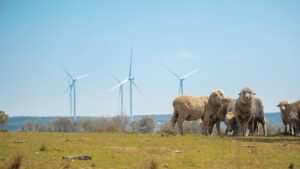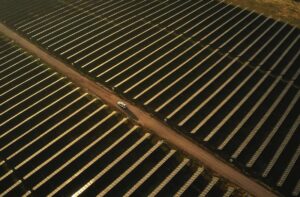For all of the talk on both sides of politics in this past decade about the need to deploy large-scale renewables in Australia, they don’t have a heck of a lot to show for it.
Apart from the state of South Australia, which under the government of Mike Rann took a leadership role and now accounts for about one half of the country’s installed capacity of wind power, the growth in the contribution of renewables to Australia’s energy mix has been ponderously slow. And it looks like the talking is going to continue for at least another six months.
In 2000, the Howard government introduced a “2 per cent” Mandatory Renewable Energy Target, ignored a recommendation in 2003 to increase it, and in 2007 the Labor government was elected with a promise to lift the share of renewables to 20 per cent target by 2020 – a policy that by then had the bipartisan support from the Coalition.
But the data released today by the Climate Change Authority, which is undertaking yet another review of the RET target, underlines the point that over the past decade not much has changed – apart from the proliferation of rooftop solar on our rooftops in the past two years. (See here for our stories from May 28 and on August 6 about how Australia led the world in the deployment of small rooftop solar systems in 2011).
Large-scale wind generation has grown from next to nothing to around three per cent of our electricity generation, but much of this increase has been offset by lower hydro generation (caused by low rainfall), and the contribution of renewables in 2009/10 was just 8 per cent – or 19,711 gigawatt hours, up from 17,838GWh in 2000/01.
The expanded RET – which calls for a “minimum” 20 per cent – specifically legislates for the addition of 41,000GWh of renewable energy by 2020, to add to the pre-existing mostly hydro capacity of 15,000GWh. At least 4,000GWh is expected to come from rooftop solar and the like, but this is uncapped.
Although this data is old, little has been added in the last two years because of the uncertainty surrounding the legislation. Renewable energy developers say 1GW should have been added to meet the target, but decisions will be further delayed pending the outcome of this review. They will be hoping that not only should the CCA underpin the need for a fixed target (if not expand it), then it should also recommend that the two-year review timetables should also be dumped.
One of the key questions for the CCA review is whether to respond to calls to make the RET a “variable” target representing 20 per cent of whatever demand is by 2020, or to maintain the fixed target.
It’s interesting that the CCA issues paper, released on Monday, noted that the Tambling Review in 2003 recommended that a fixed target was preferred because projections of electricity demand are uncertain, and a percentage target would have to be regularly revised. “A fixed target is more compatible with market certainty,” the Tambling review concluded.
The CCA noted that not only is 2020 electricity demand unknown, but so are the contributions from the (uncapped) SRES, and the future of output of pre-1997, mostly hydro capacity, which is influenced by rainfall.
Interestingly, the CCA pointed out that while a fixed target may deliver more than 20 per cent in 2020 based on current market forecasts, the “two per cent” MRET of the Howard government actually delivered a maximum of only 1.4 per cent because GDP growth at the time was higher than forecast.
“We are aware that many investment decisions hinge on the scheme’s design, and the Authority will also carefully consider the impact of any possible changes, CCA chairman Bernie Fraser said in a statement.
The CCA will look at a bunch of related issues, including whether projects funded by the Clean Energy Finance Corporation should be additional to the RET or not, and whether banding should be considered.
It will also look at the shortfall charge, and whether that is high enough to dissuade utilities from simply paying a penalty rather than investing in renewable developments, the potential inclusion of waste coal mine gas, and whether the small-scale scheme should remain separate and uncapped. It will also look at deeming, the role of multipliers, the effectiveness of the clearing house, and if it is necessary to have a review of the RET every two years.
The CCA issues paper also makes some crucial points which often get lost in the heat of the public debate.
It notes that the cost of the renewable energy certificates would normally fall as the carbon price rises, because the “top up” needed to meet the capital costs of wind farms and the like is reduced. It also notes that having a renewable energy scheme means less carbon credits need to be bought from oversees projects.
It also notes that the LRET tends to lower electricity wholesale prices, at least in the short run, because it increases capacity and the very low short-run marginal costs of renewables causes a dampening effect on wholesale prices (the merit order effect). “This means, once constructed, renewable energy generators can dispatch electricity at zero or very low prices. As more renewable generation comes on line, it competes with the incumbent generators, potentially driving down the wholesale price,” the report says.
It also notes that there are renewable energy targets active or proposed in 85 countries, and these are met with either feed in tariffs or renewable energy certificate scheme, or a combination of both. Here are some of the most significant.








